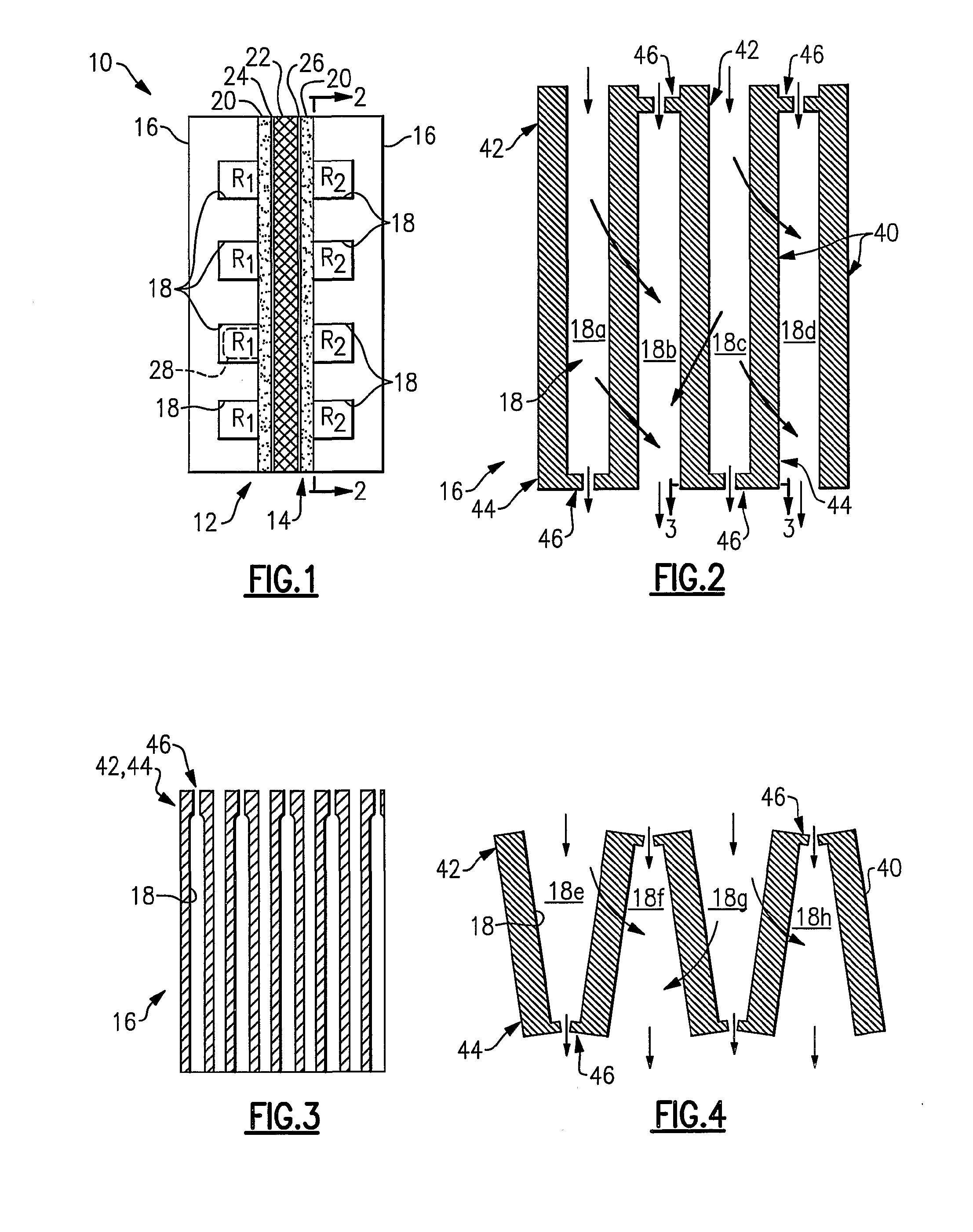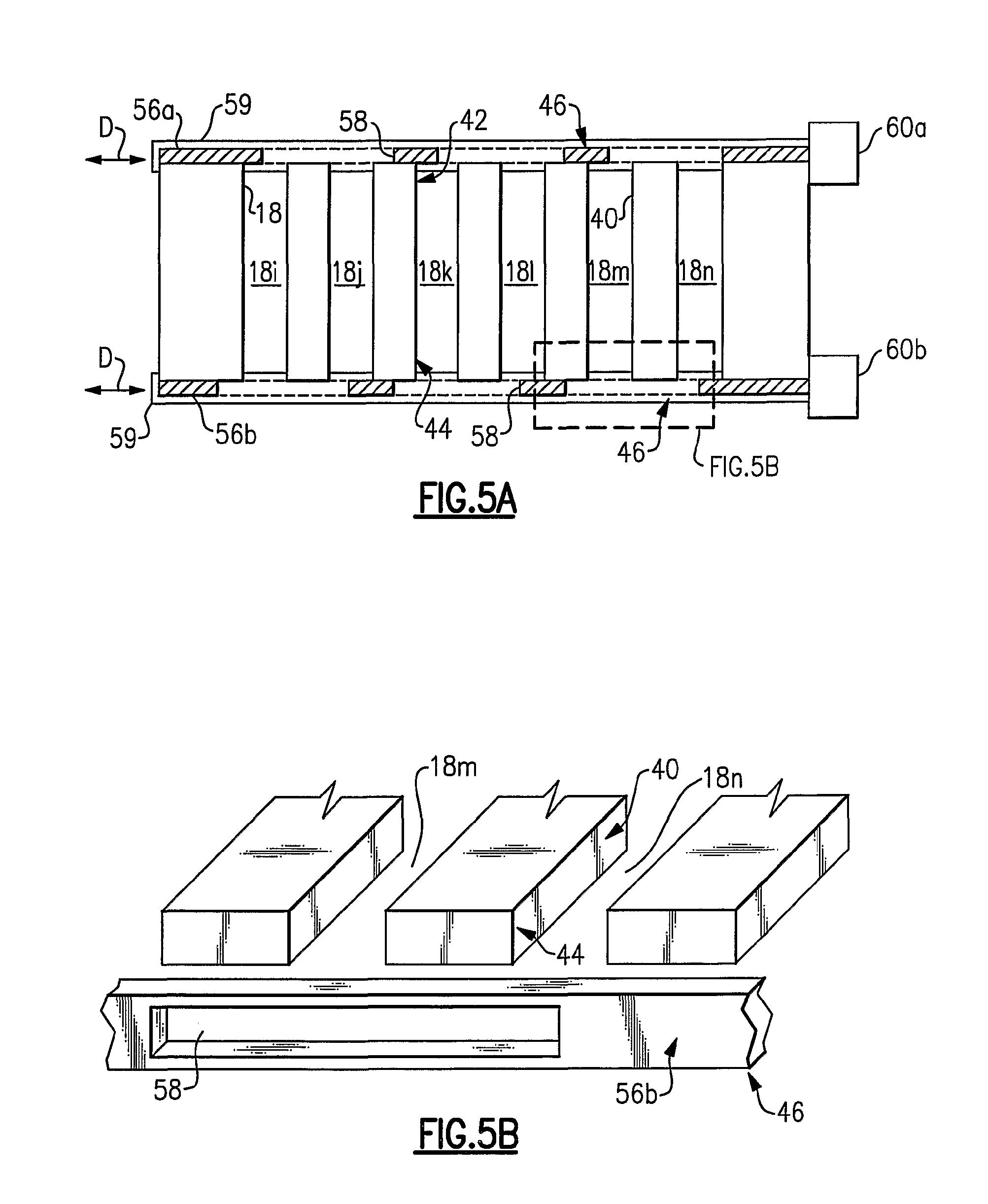Fuel Cell Flow Field Channel with Partially Closed End
a fuel cell and flow field technology, applied in the field of fuel cells, can solve the problems of consuming some of the electrical energy generated by the fuel cell, forcing the convection of the reactant gas toward, and relatively greater exposure of the reactant gas to the catalys
- Summary
- Abstract
- Description
- Claims
- Application Information
AI Technical Summary
Problems solved by technology
Method used
Image
Examples
Embodiment Construction
[0020]FIG. 1 schematically illustrates selected portions of an example fuel cell stack 10 for generating electricity. In this example, an anode side 12 receives a reactant gas R1 and a cathode side 14 receives a reactant gas R2 to generate an electric current in a known manner. Each of the anode side 12 and the cathode side 14 includes a flow field plate 16, such as a machined plate, molded plate, stamped plate, solid plate, porous plate, or other type of plate, having channels 18 for distributing the reactant gasses R1 and R2 over the respective anode side 12 and cathode side 14.
[0021]In the illustrated example, a gas exchange layer 20 is located adjacent each of the flow field plates 16. An electrolyte layer 22 spaces an anode catalyst 24 from a cathode catalyst 26 between the gas exchange layers 20.
[0022]In the illustrated example, the channels 18 have a rectangular cross-sectional profile. In another example, the channels 18 have a curved profile, such as that shown in phantom a...
PUM
 Login to View More
Login to View More Abstract
Description
Claims
Application Information
 Login to View More
Login to View More - R&D
- Intellectual Property
- Life Sciences
- Materials
- Tech Scout
- Unparalleled Data Quality
- Higher Quality Content
- 60% Fewer Hallucinations
Browse by: Latest US Patents, China's latest patents, Technical Efficacy Thesaurus, Application Domain, Technology Topic, Popular Technical Reports.
© 2025 PatSnap. All rights reserved.Legal|Privacy policy|Modern Slavery Act Transparency Statement|Sitemap|About US| Contact US: help@patsnap.com



